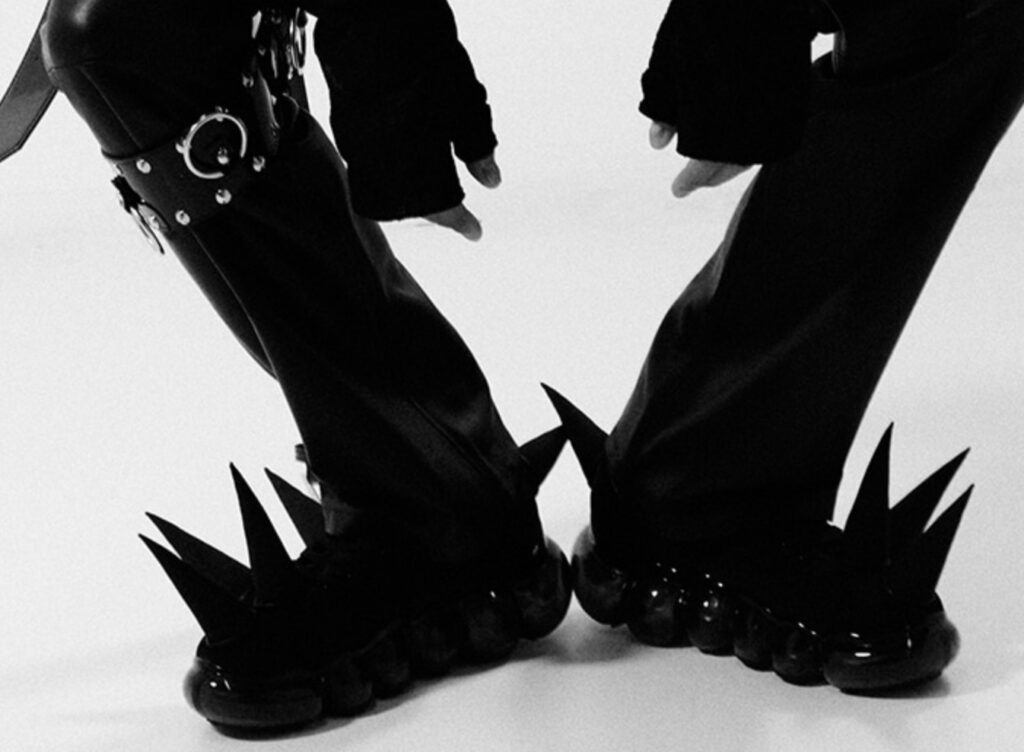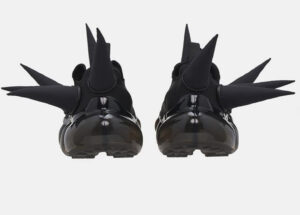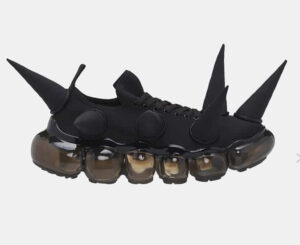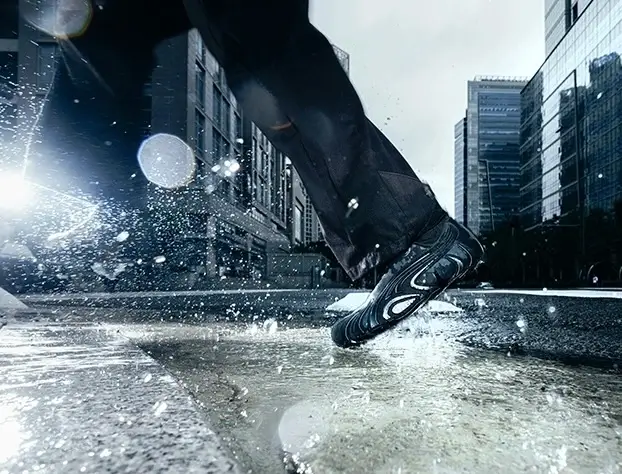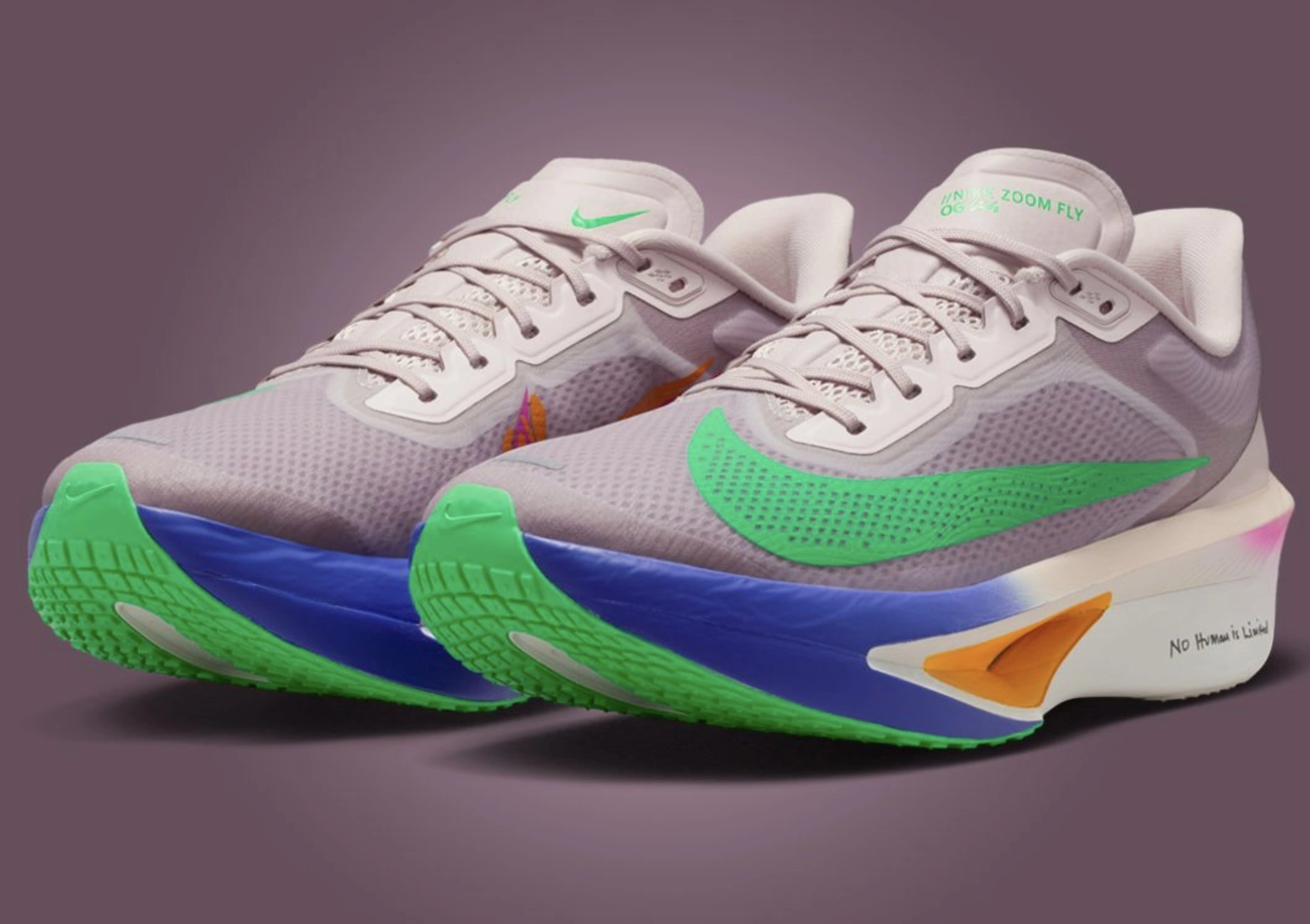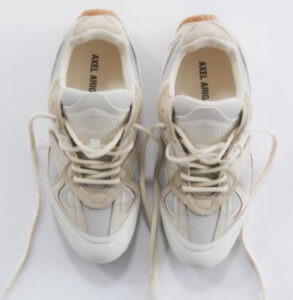In the ever-revolving carousel of sneaker culture—where drops arrive with the speed of memes and vanish with the precision of algorithms—true moments of artistic reissue are rare. But when they arrive, they resound with gravity. Such is the case with the reemergence of the SPIKE SNEAKERS by Japanese footwear innovator grounds, in collaboration with Los Angeles avant-garde boutique H. Lorenzo. First unveiled in 2020 as part of Belgian designer Walter Van Beirendonck’s FW20 runway, the aggressively abstract sneakers return in 2025 to commemorate H. Lorenzo’s 40th anniversary and the debut of an archival pop-up collection.
This isn’t merely a re-release—it’s a restatement of intent. The SPIKE SNEAKERS aren’t designed to blend in or compete with trending silhouettes; they exist in their own dimensional plane, a hybrid of fashion sculpture and futuristic footwear. And their return—exclusive to H. Lorenzo and remastered in a sleek all-black colorway—signals more than nostalgic indulgence. It is a celebration of disruptive aesthetics, of global design intersections, and of a retailer that has spent four decades challenging the status quo of luxury fashion on American soil.
The Origin Story: From Runway to Radicalism
When Walter Van Beirendonck debuted the SPIKE SNEAKERS on the FW20 runway in Paris, the fashion world barely had time to absorb their alien language. The silhouette emerged from grounds’ signature JEWELRY sneaker, a bulbous, semi-transparent soled design that itself felt like a wearable design thesis. But with Van Beirendonck’s intervention, the sneaker transformed into something even more uncanny—weaponized by spikes, infused with fantastical danger, and utterly resistant to casual categorization.
For grounds founder Mikio Sakabe, whose background straddles Tokyo street style and Paris haute couture, the collaboration with Van Beirendonck was a natural evolution of his mission: to reshape the way we perceive shoes as functional objects. The spikes, though hyperbolic in visual impact, were more than decorative—conceptually, they emphasized confrontation, the rejection of smoothness, and the theatrical possibilities of feet as canvases.
While the original drop was limited, its presence on the runway reverberated across editorial spreads and niche collector circuits. And though not meant for mass-market traction, the sneaker stood as a manifesto in itself—one that demanded revisiting.
The All-Black Reissue: Minimalism Meets Maximal Form
For the 40th anniversary of H. Lorenzo, the decision to revisit the SPIKE SNEAKER isn’t just symbolic—it’s strategic. In a year flooded with revival culture, retrospectives, and brand anniversaries, this reissue bypasses cliché. The new iteration takes the original maximalist ethos and cloaks it in a refined palette: monochrome black.
By stripping the shoe of color, the form is emphasized. The silhouette appears sharper, almost architectural in its shadows. The spikes now resemble stealth rather than flamboyance. It’s a reinterpretation that makes the sneaker paradoxically more wearable without diminishing its visual aggression.
The all-black version, available exclusively at H. Lorenzo, turns the loudness inward. It suggests maturity, evolution, and cultural memory. For a boutique that has spent forty years curating some of the most forward-thinking designers—from Rick Owens to Yohji Yamamoto—it’s the perfect emblem of defiant continuity.
H. Lorenzo: Four Decades of the Avant-Garde
Founded in 1984 in the Los Angeles neighborhood of West Hollywood, H. Lorenzo has been more than just a boutique—it’s been a barometer of directional fashion. At a time when American luxury was still largely defined by department stores and legacy houses, H. Lorenzo carved its niche by bringing under-the-radar designers from Europe and Japan to a city dominated by celebrity fashion.
Through the years, the store has served as a haven for cult fashion followers, stylists, and creatives looking for something less polished, more primal. It has built relationships with designers long before they became household names, cultivating a space where Comme des Garçons could hang beside emerging textile futurists, and where runway pieces weren’t trophies—they were instruments of identity.
This archival celebration is not a retrospective in the traditional sense; it’s a reaffirmation of values. The re-release of the SPIKE SNEAKERS exemplifies H. Lorenzo’s commitment to pieces that challenge, provoke, and remain immune to time.
The Meaning of a Spike: Function as Fiction
At first glance, the SPIKE SNEAKER seems almost cartoonish in its extremity—a foot turned into a weaponized object. But deeper interrogation reveals a layered commentary. In an era of “safe” collaborations and template-driven design, the spike is a refusal. It says no to ergonomics, to aerodynamics, to the sleek ambitions of performance sneakers. Instead, it elevates form over function—or rather, it redefines function as emotional impact.
The shoe doesn’t ask to be liked. It demands to be seen. It activates the limb in a way that fashion rarely does anymore, recalling the purpose of early punk garments or Japanese cyber-fetish platforms. It’s not surprising that both grounds and Van Beirendonck operate in parallel universes—worlds where wearability is negotiated, not assumed.
The return of this design, particularly now, speaks to a broader hunger within fashion communities for pieces that aren’t filtered through market testing or watered down for the algorithmic feed. It’s footwear as protest. Footwear as portraiture.
Global Circuits: Tokyo, Antwerp, and Los Angeles
That this project comes to life through the triangulation of Tokyo, Antwerp, and L.A. is no coincidence. These are three of the most stylistically idiosyncratic cities in the world—each operating with its own rules, aesthetic values, and histories of subculture. The grounds x Van Beirendonck x H. Lorenzo trifecta isn’t a conventional collab. It’s a global dialogue between cities that have never relied on fashion capitals for validation.
Tokyo brings the spirit of hyper-design. Antwerp contributes intellectual provocation. Los Angeles provides the cultural amplifier—a setting where fantasy meets accessibility. This sneaker, birthed from the confluence, is less about geographic marketing than it is about cultural hybridization. It’s a rare object born of international codes but built for those who transcend them.
A Statement for the Archives
As the SPIKE SNEAKERS take their place on H. Lorenzo’s anniversary shelves—among archival pieces, lost gems, and newer provocations—they serve as a reminder: fashion, at its best, doesn’t seek universality. It carves its own time. The sneaker’s return in 2025 doesn’t aim to satisfy a trend or respond to demand. Instead, it affirms that radical ideas deserve sequels, that silhouettes can be resurrected with meaning, and that the foot is still fertile ground for rebellion.
Forty years in, H. Lorenzo isn’t just surviving—it’s curating futures. And in this moment, that future is spiked, sculpted, and unapologetically black.
No comments yet.

